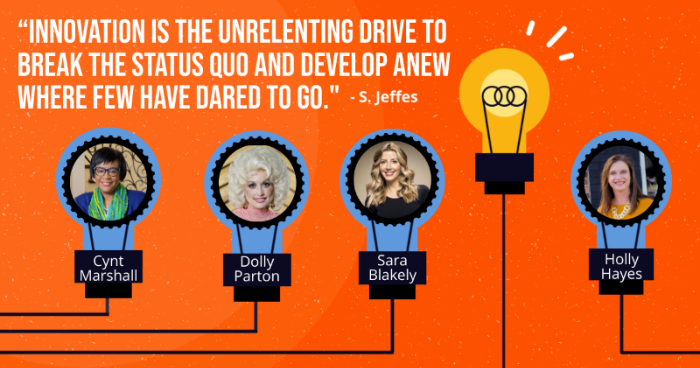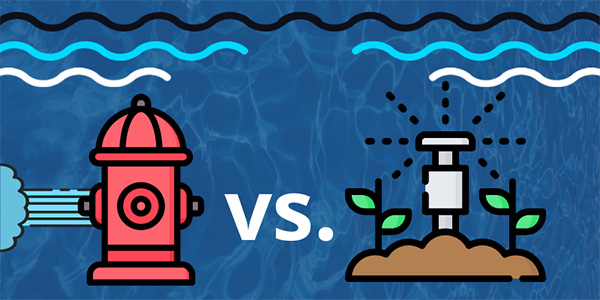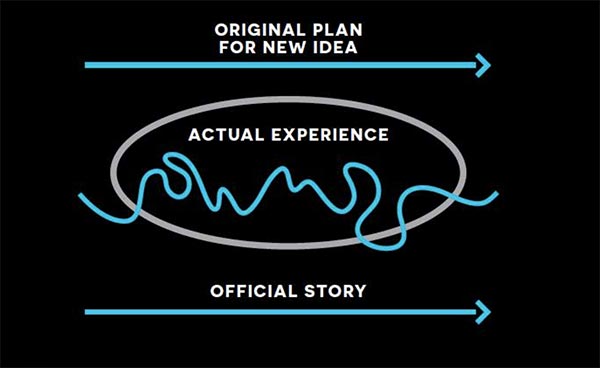
Everyone on your team needs oxygen. I’m not talking about air to breathe, silly, but space and time to rest, recover, rejuvenate and restore ourselves. Different team members may require very different activities to “breathe.” For some it may be binging on Succession or Yellowstone, or going to Taylor Swift’s Eras tour. Others might recharge by biking, cooking or golfing. I find that going down a fast hill on my bike gets my heart pumping in new ways, and I’m often more creative the next time I sit down. Your recharge activity may be completely different – you be you! If we are solely focused on work and only work, we are going to exhaust ourselves, and quality will go down drastically.
As leaders, encourage your team members to find their oxygen. With so much turnover in the workplace, it’s paramount for team members to breathe. It’s easy to become solely focused on work, and that’s the perfect recipe for exhausting ourselves and diminishing the quality of our work. Remember that job satisfaction – and retention – is closely linked to a sense that your team members’ work matters, and their time and talents are appreciated. Don’t let your team members become one-dimensional…where all they do is work, go home, then wake up the next day and do it all over again. That’s a spark-killer for sure.
I’ve spent the last month building Pinterest boards for redecorating our living and dining room. My oxygen has come from painting bookcases, looking at different pillow and rug samples, and scoring the greatest find at the local antique store. Our blue-and-white living room has allowed me some time to engage my mind and heart in a new way. And I think both home and work are going to be better for it.
I’ve recognized that while sanding the wooden bookcases, I’m able to stop thinking constantly about whatever is going on at work. My eyes and mind are solely focused on the wood and the 80-grit sandpaper I’m using (and the muscles that are hurting that I never knew I had). This little reprieve from work has helped me BREATHE. It provided some much-needed rest and actually rejuvenated me. Not to mention the very attractive set of bookcases I’m going to have when it’s all done!
Encourage your team members to enjoy their time away from the office. Find what helps them breathe, and then make sure they take time to actually do it. In fact, if they need a little extra push, something that pertains to their favorite activity makes great birthday or holiday gifts. Personally, I’m hoping for an electric sander.
Stay Sharp,

Holly Hayes, President & Founder
ISI Consulting

Well, we’re in the dog days of summer, when everything seems to slow down to a crawl. That’s certainly true for ISI Consulting, and maybe your business, as well. We’re not facilitating that many meetings and trainings have come to a slow and gradual decline. I’ve heard it said that for lots of organizations and businesses, activity tends to slow down in the “J months” (January, June and July). Seasonal lulls (whenever yours hits) can be a great time for you to reinvest in your organization or business and evaluate all aspects of what is working and what is not working. Nothing, and I mean NOTHING, should be off limits during this evaluation period.
There is always room for improvement. During these slower periods, look around and watch for areas that may need a little love. What can we do more efficiently? Where can we be more creative? What needs to be re-organized? What could do with a little more polish or finesse? Are there things or projects or ideas that need to be tossed out completely? Is there something that has always been on the back burner that you actually may have time to work on now? Ask your team members two simple questions…“What can we do better?” and “What can we systematize?” I promise if you ask them these simple questions, the flood gates will open. Before you know it, you’ll have more than you could get done in the J months and more.
Once your team has identified areas to improve, prioritize the list, assign owners to each of the mini projects, set some deadlines and get started! We did just that at ISI Consulting, and by the end of June, we already had four items marked off our list. Wohoo! Our One Drive digital filing system has been completely re-organized and makes so much more sense, new user-friendly templates have been created and our You Tube channel is about to be launched. These mini projects have re-energized our team and ownership is at an all-time high. The same thing can happen for your organization. Go ahead and tackle some projects. What’s been on the back burner? What have your thought about, but never actually tackled. Often these items won’t be “urgent” but they’re so important as you grow and scale. Let’s all be about the business of systemization and improvement. Our team members, customers and clients will thank us for this!
Stay sharp,

Holly Hayes, President & Founder
ISI Consulting

I’ve been without two key team players for the last two weeks. Good ole’ summer vacations have come around and I’ve been left with lots of tasks that I don’t normally do. Let’s just say that I may have used some colorful language on the printer, scanner, laptop…and even the ice maker this week. Yes, I know that yelling at inanimate objects isn’t productive, but somehow it made me feel better.
I’ve been doing some tasks this week that I haven’t done in the last three years plus…and man, I’m glad that I have. You see, my perspective on the complexity of a task and how long it should theoretically take has shrunk over time. I have been diminishing tasks and underappreciating all that goes into moving something from a requested task to a completed task. I had lost perspective.
Will Guidara (2022) says this so well. “Perspective has an expiration date, no matter how hard you try to hold on to it.” I needed to tap back into what it means to be the administrative assistant, project manager, video editor, social media coordinator, data analyst, and…the roles go on…and on…and on. I had lost a valuable viewpoint for the very people I was managing.
I absolutely want us to be super-focused on scaling our businesses and organizations. That is important (and probably is in your strategic plan). However, let’s scale our business without losing perspective in the process. Your organization cannot run without the valuable individuals in the office and working remotely – without subcontractors, freelancers (go Fiverr), vendors, volunteers, and even the occasional family member. We’ll all be better managers and leaders if we take time to gain, or regain, some real-world perspective. I don’t mean just reading about it. I mean blocking off some time on your calendar and getting your hands dirty. Do some jobs you usually delegate. Let’s all dig in and remember that our best recollections and memories of a task are probably out of date, and we need to get some fresh perspective. Your team members are really going to thank you!
Stay sharp,

Holly Hayes, President & Founder
ISI Consulting

When I was 30, if you had called me a disrupter, I’d have been insulted. I might have even sulked. Why? Because, back then, I wanted to be liked, to be accepted, and to just fit in. But now, at um….42 years old, I’d consider being called a disrupter a compliment. I’d be happy. It would be a comment on my personal business savvy and success. After all, that’s what I’m about. I want to disrupt the in-person meeting space, the snooze fest of board meetings, wasted time at retreats, and mindless virtual meetings.
My goal is to flip meetings upside down and only keep the parts that are valuable and have a purpose. I’m sick of meetings that are just about receiving information that never gets implemented. I want to invest my time – and yours – in helping groups to provide input toward decision-making and moving to implementation responsibility. I hope that meetings facilitated by ISI Consulting are different and completely unlike the norm. Yes, we’re about disrupting unproductive in-person and virtual meetings…and proud of it.
What are you disrupting? What is your organization pumped up to turn around? What makes you angry? What makes you downright giddy? What is it? Customer experience guru, S. Jeffes, notes that “Innovation is the unrelenting drive to break the status quo and develop anew where few have dared to go.” That sounds a LOT like positive disruption to me.
If I could sit with three women this year, it would be Cynt Marshall (former equity disrupter of AT&T and now CEO of the Dallas Mavericks), Dolly Parton (singer, songwriter, and philanthropy forerunner, always doing it HER way) and Sara Blakley (undergarment disrupter and CEO of Spanx…who makes us all look better). These women saw needs and didn’t wait for someone else to tell them how to do it. They moved forward and laser-focused on the issues they saw and knew they could fix. They were relentless in iterative learning and experimentation. Not everyone liked the disruptions that were taking place at the Dallas Mavs, in Nashville, or at Spanx headquarters. These women didn’t care, because they recognized that anyone pushing against the status quo is going to experience pressure. It’s OK and necessary.
I’d like you to take a little time in the next week and do yourself a favor. Think about your position and your business or industry. Are you disrupting anything? If not, where and how could you become a disruptor? How can you push yourself and your organization forward? Then write out the following sentences, fill in the blanks, and put that piece of paper where you’ll see it every day. Commit to use it as your encouragement to be a disruptor. I know you’ll be surprised at the results.
We are disrupting the ______________ industry. We strongly believe _______________ and as a result we commit to doing/providing _____________ to our customers/patients/participants.
Stay sharp,

Holly Hayes, President & Founder
ISI Consulting

They arranged to rent a bus for the day. And a medical doctor and two nurses devoted a half day to help my family enjoy visiting Table Rock State Park with my father…who died just three months later. The Hospice team didn’t have to do this. The doctor and nurses didn’t have to do this. There was no billing code for reimbursement for their services, but they still did it.
Why? This special Thursday came about all because a doctor listened carefully and then showed unreasonable generosity to my family. He heard my brother and mother talking about hiking to the top of Table Rock, swimming in the lake and getting ice cream at Aunt Sue’s restaurant. Quietly and with no social media optics moment, Dr. Kumar (pictured here with my mother and father) made it happen. Had he and his team ever done this before? Nope…and it didn’t matter.
Why would a physician and two of his nurses do this? Showing love and genuine care was a non-negotiable for them. It defined who this hospice organization was, and you didn’t need to read a strategic plan or mission statement to experience this in action. They baked it into their organization from the ground up, and when an opportunity to show love and genuine care presented itself, they didn’t ask “Should we?”, but “How can we?”
I know the terms welcoming, belonging, and inclusion are being used more frequently around the staff and board table. I want us to really dig deep and uncover what that means for your organization or business. How might we approach being welcoming and inviting with as much passion as we devote to our product or service line? We live in a world where money is getting tight(er), everyone is tired and stretched, and folks are slowly starting to pull back. We need connection like never before. Even in lean times, don’t slack up on your values. Hold true to the reason your organization/business exists. Lean in and be relentless in making your values shine even brighter. We all need that.
South Carolina has 47 amazing state parks scattered from the coast to the Upstate. Let me suggest you visit one of them and build some memories of your own. Because they’re incredibly important during times when we’re all stretched and need connection. If you have never visited Table Rock State Park (Table Rock | South Carolina Parks Official Site) I highly recommend it. It’s the first place my future husband and I said, “I love you” and one of the last places I shared an embrace with my father. I have since visited the park with my three-year old son. He never met my Daddy, but boy do we share stories.
Stay sharp,

Holly Hayes, President & Founder
ISI Consulting

Good on-boarding of new employees and volunteers in your organization is THE secret ingredient in 2023. Finding and retaining team members is a recurring theme playing out right now across the country. According to the US Bureau of Labor Statistics, the average employee turnover rate in 2021 was 47.2%. In addition, the average cost to replace an employee can range anywhere from half to two times their salary, according to data from Gallup. And those numbers are only getting worse. You must…I repeat…you must flip your on-boarding process on its head if you want to keep your new team members.
On-boarding in 2023 needs to be completed in phases. I call it the sprinkle spiral. Let me explain. The common/outdated/ineffective – “fire hydrant” – approach is to spend one to three days with a team member and provide them with all of the information, tools, tasks they could ever need and then walk out the physical or virtual door. Boom…you’re done. You encourage them to reach out to you with any questions. You notice that “deer in the headlights look” but think…they will magically be fine the next day. You’ve done your part, and after all, you have important work to do and need to get caught back up. You recognize that the “fire hydrant” approach isn’t working when you’re frustrated and not sleeping at night because you are not getting the results you and your team desired. Sound familiar?
We need to move away from the “fire hydrant” approach and do the sprinkle spiral. I’ve completely made this phrase up – so please don’t Google it. Instead of soaking newcomers with information, let’s spray team members with information in different chunks. Start with broad/high-level information and then go deeper – just like all of the adult learning models show works best. Allow time for the team member to practice/demonstrate a skill before moving to the next item on a checklist. We put together a plan that could range anywhere from two weeks to six months, depending on the complexity of the job role. We must adopt a mindset of the long game. We want this team member to be wildly successful and with us past the 60-day mark. To accomplish that we must invest our energies to train in more engaging and effective ways. We all need to create spray spirals.
I have no doubt that new team members and volunteers will be excited to join your team this year. But I want them to stay excited past the first day and three month mark. How might you flip the on-boarding fire hydrant on its head and have spray spirals across your department?
Let’s all start doing the sprinkle spiral. And if you and your team want to work on some strategies to help develop your own sprinkle spiral, give me a call, and let’s get together. I cannot wait to hear your success stories!
Stay sharp,

Holly Hayes, President & Founder
ISI Consulting

Yep…I did it. I’ve been off the grid for nine days and I’ll admit, it feels a little strange. I whipped into work this morning ready to roll (I thought) and realized I’d left my cell phone at home. Had to turn around and run back for that. Next, I struggled with setting my laptop up in the docking station. You see – my laptop has not been touched in nine days. Needless to say, I was a little rusty and my team members let me know they found it quite humorous. It was definitely a Monday kind of Monday.
There’s more and more evidence that we all need to take a “screen break” every now and then. I completely agree that we all need to “detox” from the large and small monitors in our lives and reclaim how to think without them. We need time to think and marinate on a topic without immediately Googling it or researching an idea. Having time to sit with our thoughts and ideas without a single email, phone call, text message or notification is essential. Don’t worry – the world will still go on, I promise. And I submit, you will probably be more thoughtful, creative, and in-tune with your surroundings by intentionally fasting from the digital monitors that have overcome our daily lives.
Just because I was off the grid while in Mexico this past week doesn’t mean I wasn’t productive. Quite the contrary. I created two new frameworks for strategic planning and an accelerated action plan and even crafted a poem depicting part of the origin story for my business. I did this all with nothing but pen and paper. Throughout the week, I scribbled over pieces of the work and refined ideas further as I was able to think about them more. I’ll even revisit all of this again before taking to the keyboard to type up my final versions. It felt refreshing changing up the process, and first starting with paper and uninterrupted space to really reflect and think about issues. How might I help clients who are having a particular problem? What framework, over-arching focus question, or scripted story could unlock the gridlock and help clients move past their blocks and move toward action? Because I had nine days of no phone calls, no emails, no reminders, and no internet to tell me what the answer was, I was forced to be creative. To come up with ideas and answers that work for MY clients, in OUR collective environment.
If you are stuck with an issue, I encourage you to take a day or two and unplug. No phone calls, no laptop, nothing…but you, some paper, some books (not work-related) and time. I’m sure it will feel downright weird at points, but it will be worth the effort and discomfort. You were created to be creative. You were called into your position at your organization for your perspective. What do you think? Don’t worry what 1,000 followers think or the latest peer-reviewed article says. What do you think and know? What do you want to test and explore? The most successful people always say there was a point where they had to trust their gut and instincts. What they personally knew and had learned. You can’t do that unless things are quiet enough to listen and hear.
Stay sharp,

Holly Hayes, President & Founder
ISI Consulting
Yeah, you heard right. Don’t wiggle out of the squiggle. According to Leith Sharp (director of Harvard’s Sustainability Leadership), squiggle is all of the variation that happens in the “in-between” phases of any project. Apparently, it’s the new jargon for the “messy middle.” New ideas and new projects all have their own set of “issues” – stakeholders, risks, opportunities, budget, history, context, etc. With these issues onboard, the journey is rarely if ever linear. The journey is most often up, down, and all around and sideways. Yet, the final story we share is the linear story. Leith Sharp and others want you to embrace the squiggle and share all parts of your story. Let’s be real, and don’t hide the messy middle.

Just last year while teaching a project management bootcamp, I encouraged team members to be aware of what’s known as the implementation dip. As soon as you get going, there will be a dip in productivity. Beware! Don’t let that dip take you by surprise.
But I failed to tell them that, in all honesty, this process looks more like a roller coaster ride than a single dip. They needed to beware of 250 dips and squiggles that are somewhere in the middle! Did I warn them of that? Heck, no! I just showed one dip on the implementation journey and then moved on to how to sustain momentum. Shame on me.
If you know it’s coming, you won’t wiggle out of the squiggle. Keep going. Keep learning. Keep making adjustments. It’s part of the real-life project life cycle. Embrace the ride. And one more piece of advice. Let’s talk to our newest team members (Gen Z) and let them know to expect this. There are going to be a lot of mistakes, concerns, and questions along the way. Those can make your newest team members really uncomfortable. Build trust on your team and welcome this! We do not wiggle out of the squiggle. We are going to embrace it and move forward. Let’s all be more comfortable and willing to share our real – squiggly – journey so others can learn along the way.
Stay sharp,

Holly Hayes, President & Founder
ISI Consulting

My husband and I are planning to run a half-marathon (13.1 miles) in Nashville in April. We’ve been training consistently for the past month and a half to get ready for the race. We run three short runs (3-5 miles) during the week (every Monday, Tuesday and Thursday) and do our long runs (6 miles or more) every Saturday. Wednesdays and Fridays are generally busy days at work. The schedule is perfect, because although we do have short runs back-to-back, we never have two days in a row with long runs. I would never think to run two long runs back-to-back. First of all, my feet would be killing me! My pace, and therefore, my times, would be really, really bad, and that would be depressing. But most important – my body needs time to recover – and it wouldn’t be getting that.
Thank goodness for Sunday – our rest day. The day when my body gets to recover…to restock nutrients, rebuild muscles, and reset itself. Without it, I’d likely see far less improvement in my running than I have now. I might even face burnout or injury. And while you may not be training for a half-marathon, you can treat your work in much the same way. You need both work and recovery time built into your schedule. Don’t just run from one project to the next without stopping.
I know there’s a temptation to run wide open all the time. You likely have more work to do than you can say grace over. Everyone needs you and your input. There’s always one more project to tackle. But putting on the brakes can be good for you. Without that pause, your quality will suffer. If it hasn’t already…
As a manager, leader, project coordinator, (insert any job title here), you need time to recover from your “work sprints.” Did you just hit “send”, submitting a 30-page report to a funder? You need a rest day. Did you finally push through to the end of a 28-day legal trial? You need a rest. Have you closed out an amazing in-person conference for the first time in two years? Rest, my child, rest.
While the temptation to move right into the next project is strong, resist it. Give your brain and body time to reset. All projects require flow, focus, and renewed energy if you’re going to do a good job on them. Before taking on anything new, take a real break – not just a coffee break.
I’m a better runner by building recovery time into my schedule. You will be a better team leader, team member, or team contributor if you build this in, as well. Recovery time won’t be the same for everyone. For some of us, it may just need to be a day – but for others we may need to apply the brakes and not take on any complex task or NEW projects for at least 48-72 hours. It depends on YOU and your rhythms and your recovery. Maybe on recovery days, you are de-cluttering your office, reading that book you ordered three months ago and never skimmed, or perhaps you are just being still without any meetings on your calendar? Whatever it is…make sure you do it. Quality matters and we can’t produce high quality work if we are always pushing forward without taking time for recovery.
Stay sharp,

Holly Hayes, President & Founder
ISI Consulting

I want to be wiser this year than last year. Wisdom is something I suspect we all are probably seeking. Something happened recently that made me think about how I develop wisdom.
While walking though the Redwood National Park in California this past week, I couldn’t stop looking up. Staring in wonder, I saw massive trunks rising over 300 feet into the sky, with green leaves and branches stretching toward the clouds. The redwood trees are massive, old, and utterly unlike anything I’ve ever seen before. Some of the trees in this National Park are over 2,000 years old, and even the most common, relative youngsters are over 500-600 years old. That’s a time frame I find it hard to wrap my brain around. And I submit, we can learn from these ancient trees.
I was shocked to discover that these massive, ancient trees have a very shallow root system of only 10 to 12 feet. How can this be? How can such an apparently tiny foundation support something taller than the Statue of Liberty? I learned that these trees create an interconnected web of roots with other trees that extends for hundreds of feet. You see, not one redwood tree stands by itself. Each towering tree depends on other trees around it. These trees – that have survived earthquakes, fires, droughts, floods, good seasons and bad seasons – live in a family of trees supporting one another.
I believe we all can take a lesson from the redwood tree and spend less time growing vertical roots (on our own) and invest our energies in nurturing our horizontal roots. We need a family of partners, organizations, and friends to survive and thrive in both good and bad times. Let’s focus on strengthening our horizontal roots to be hundreds of feet long. It won’t happen overnight, and we must be intentional about developing those strong connections. That can be a challenge because we are living in a time of disconnectedness. But you and your organization will be breathtaking when you’re linking hands, time, and energies with one another. Beauty comes in our connectedness. So be like the towering redwoods and send out those roots. Because we are wiser, together.
Stay sharp,

Holly Hayes, President & Founder
ISI Consulting